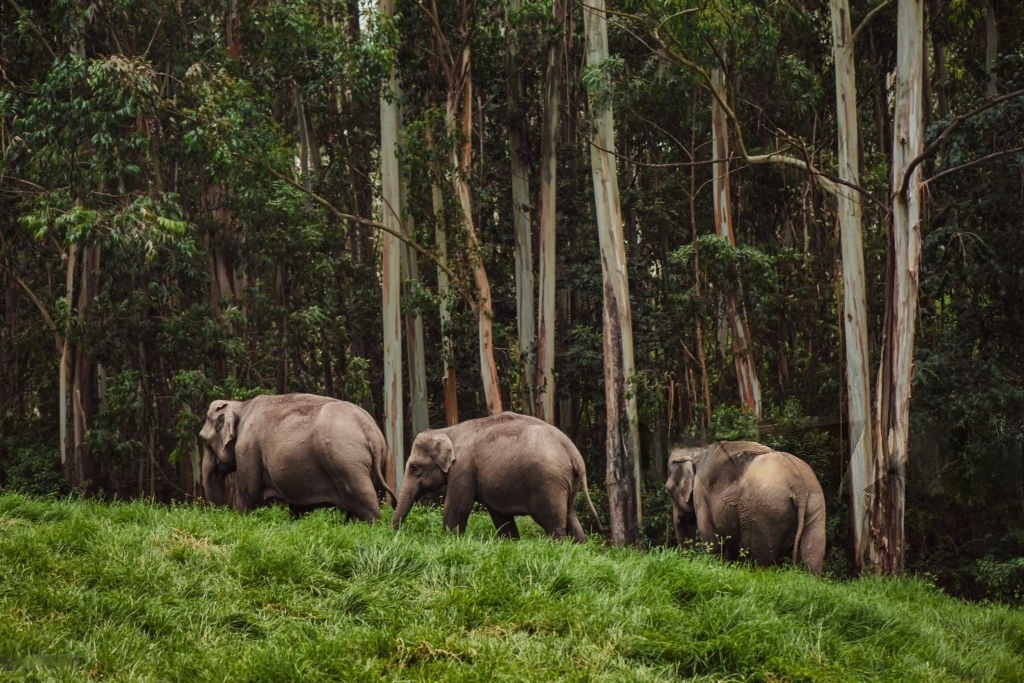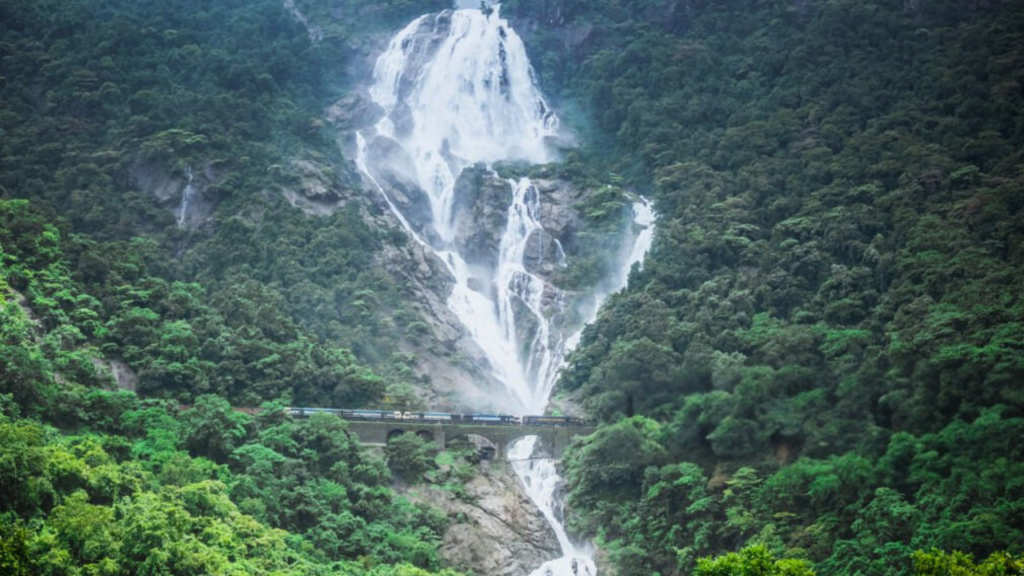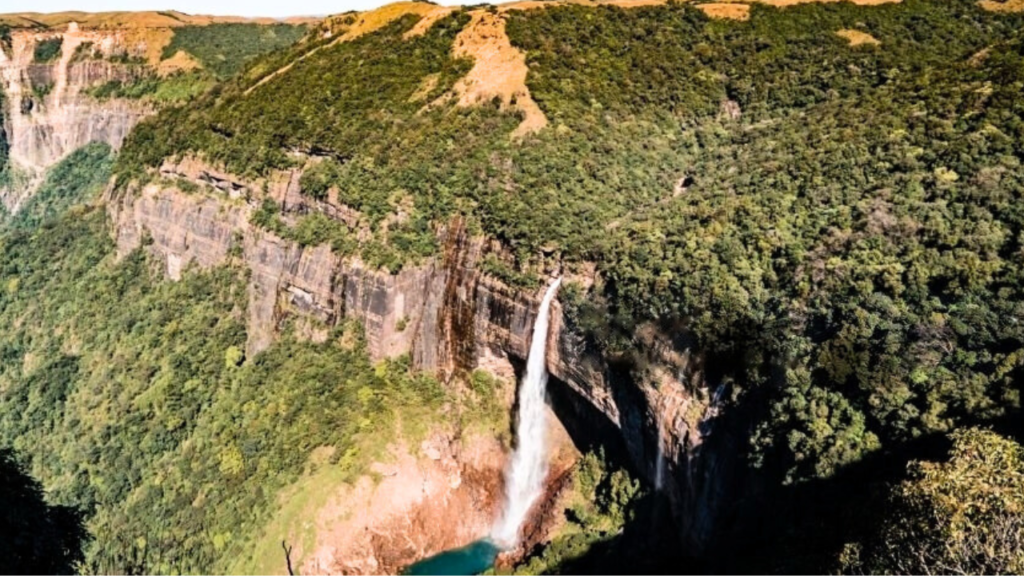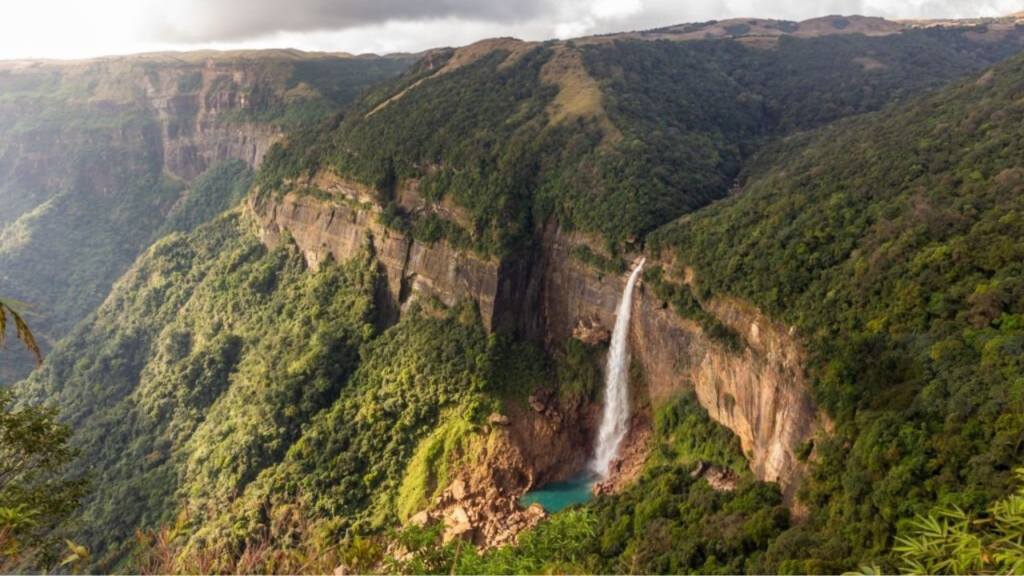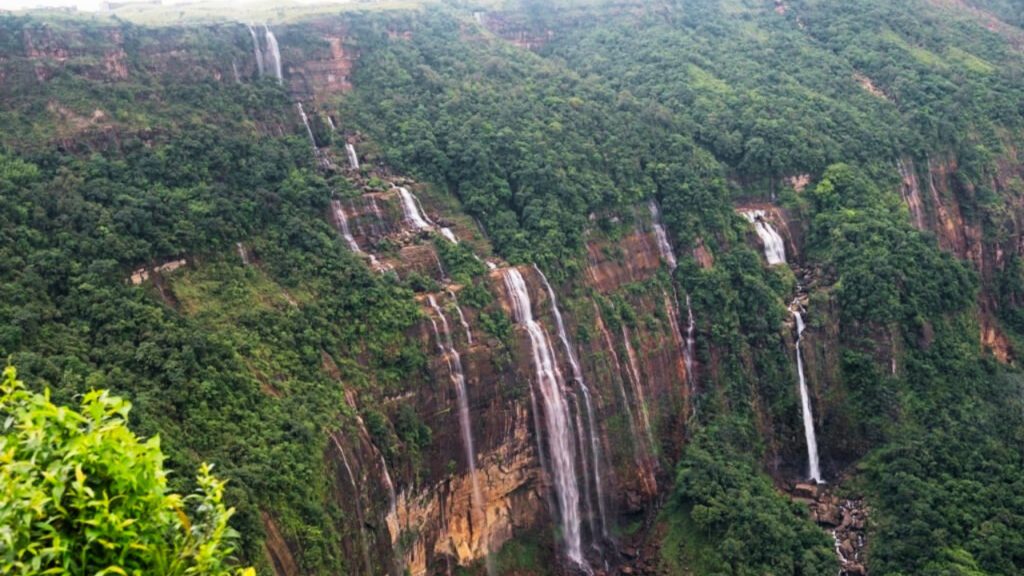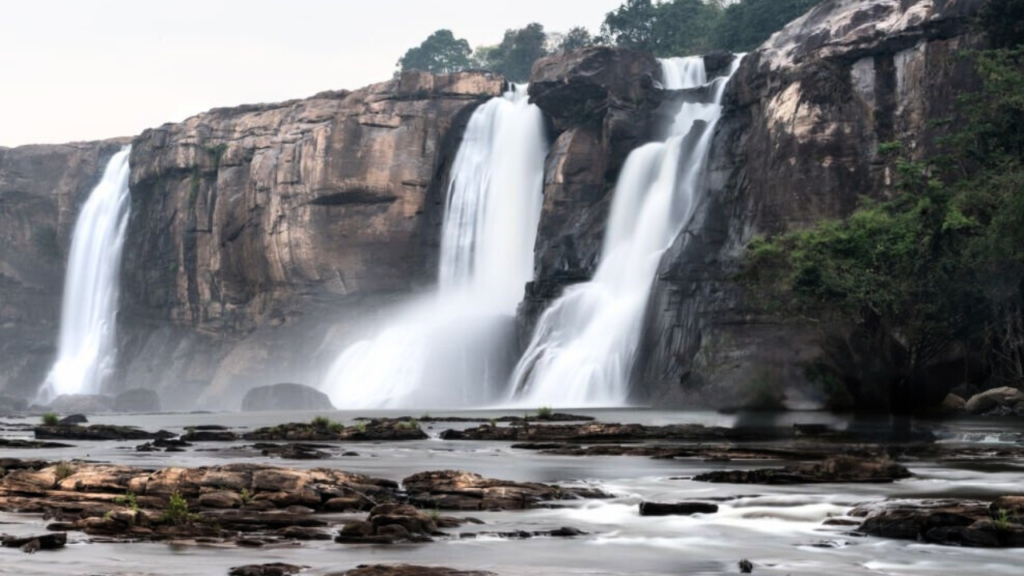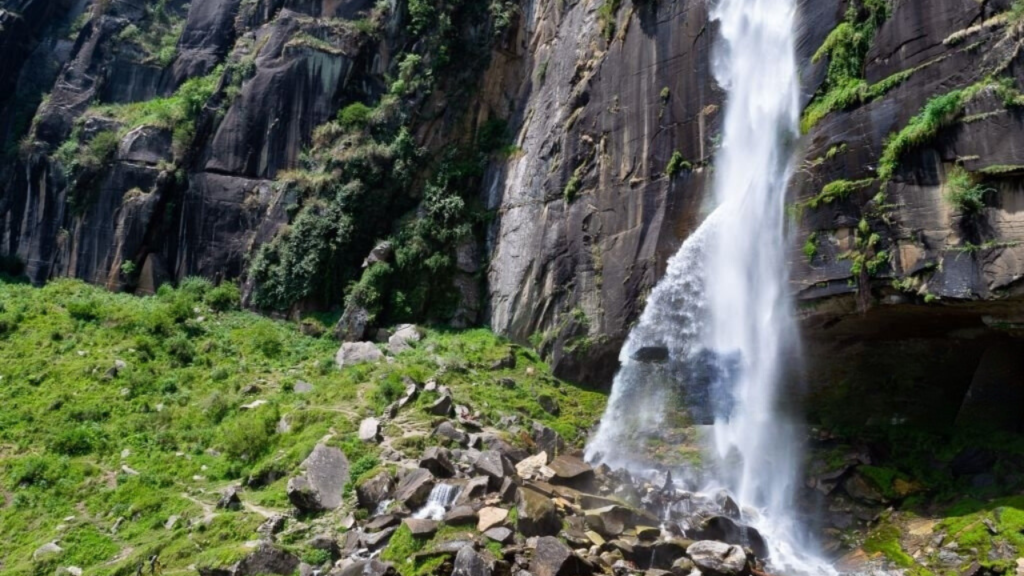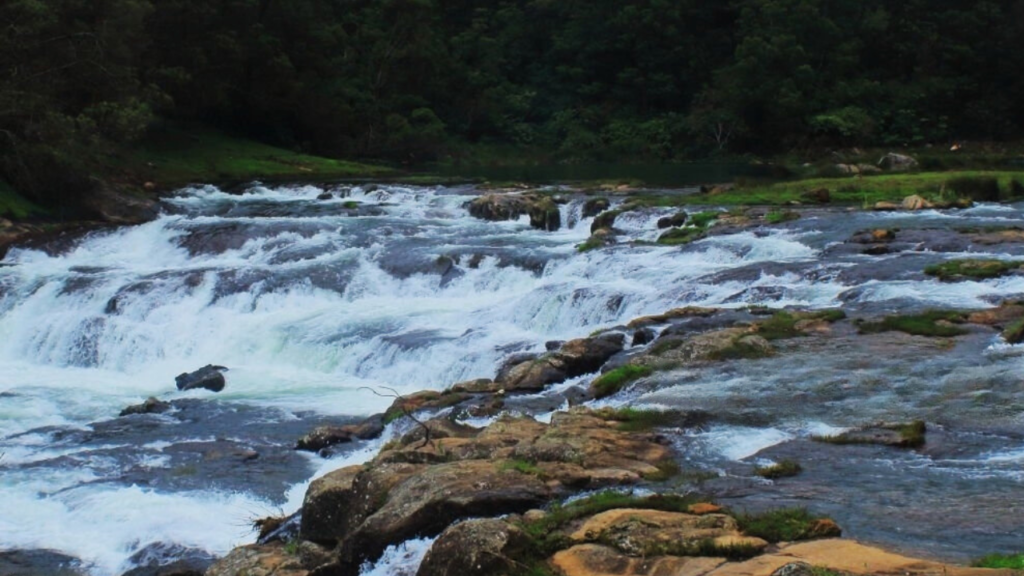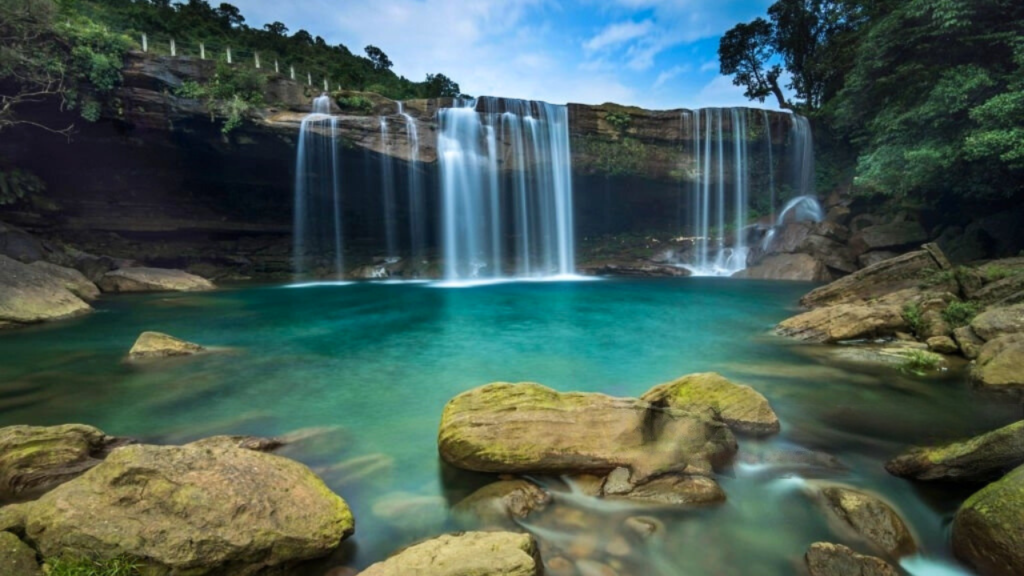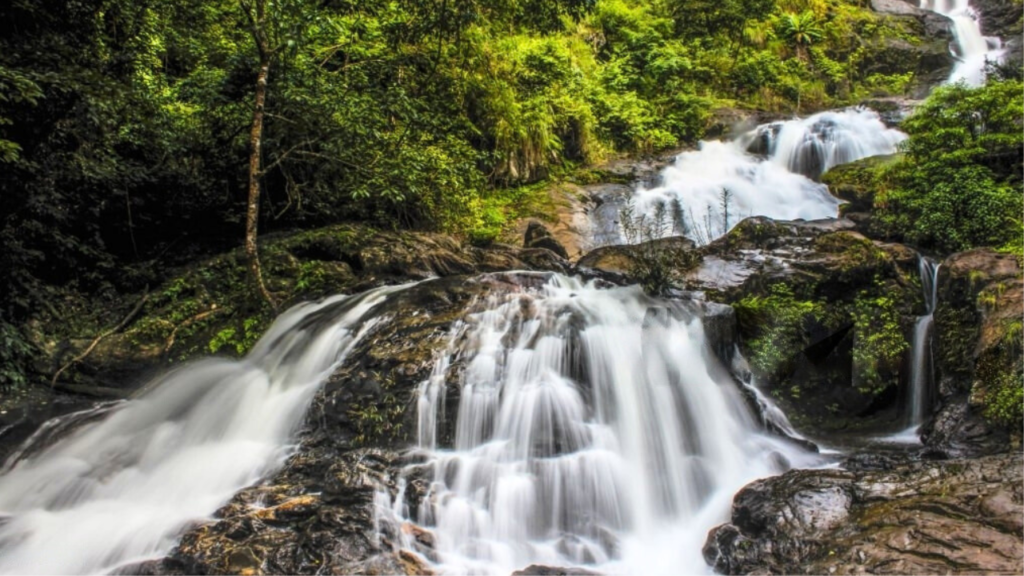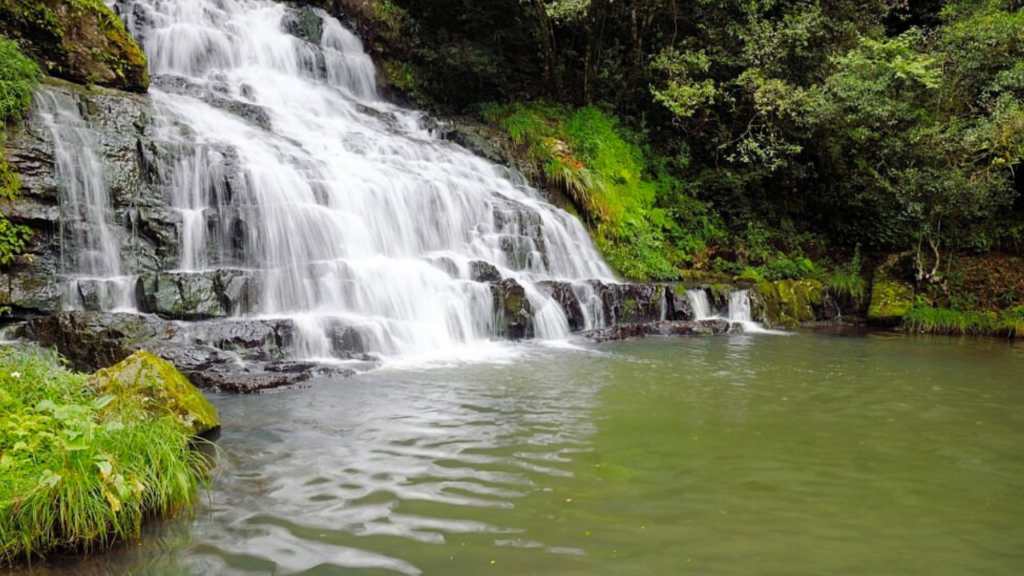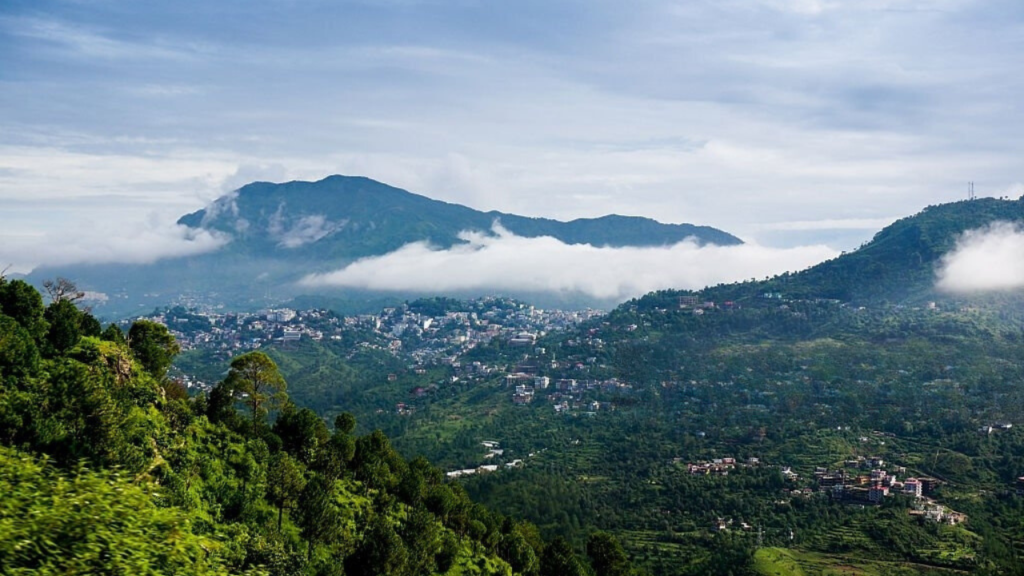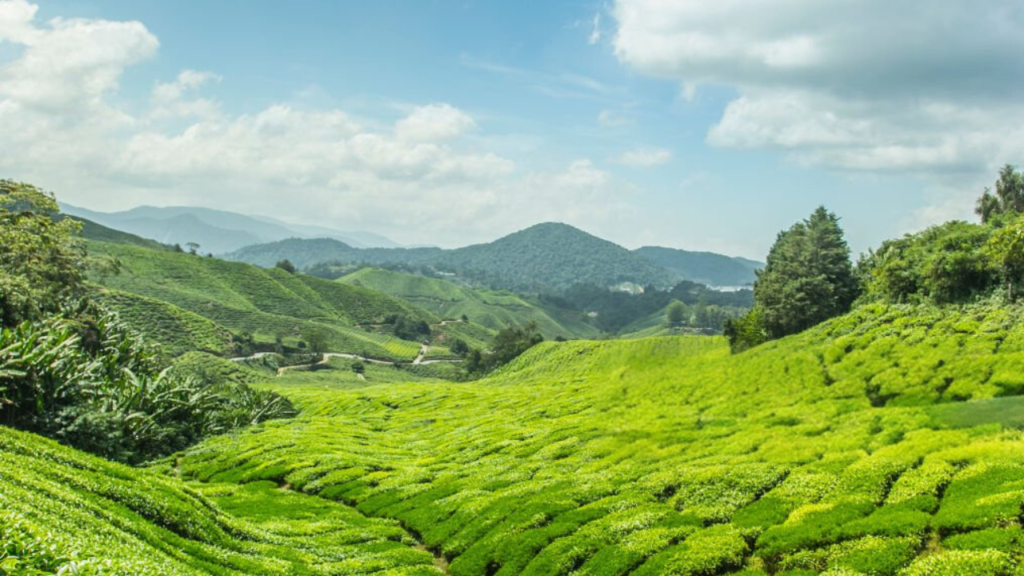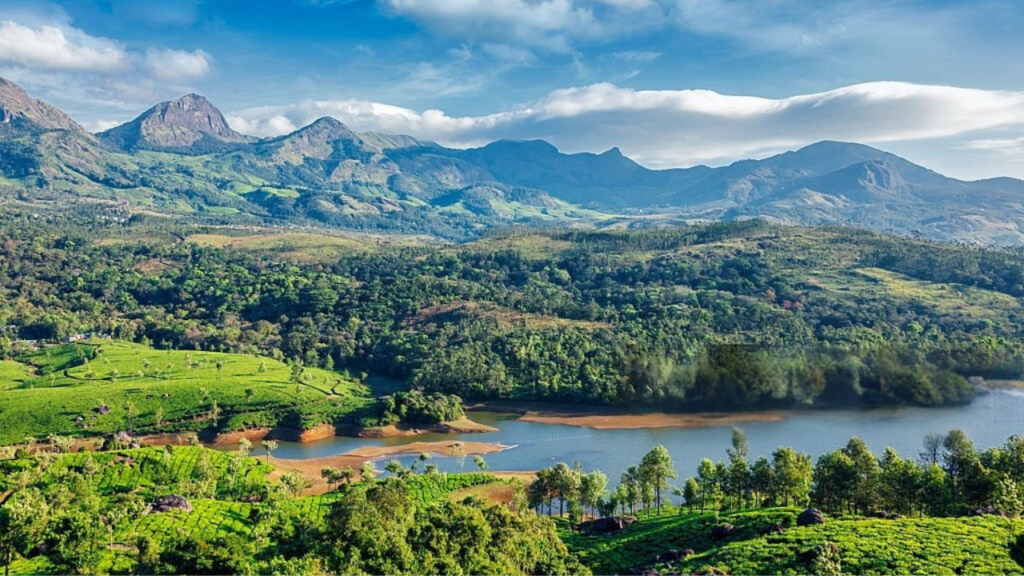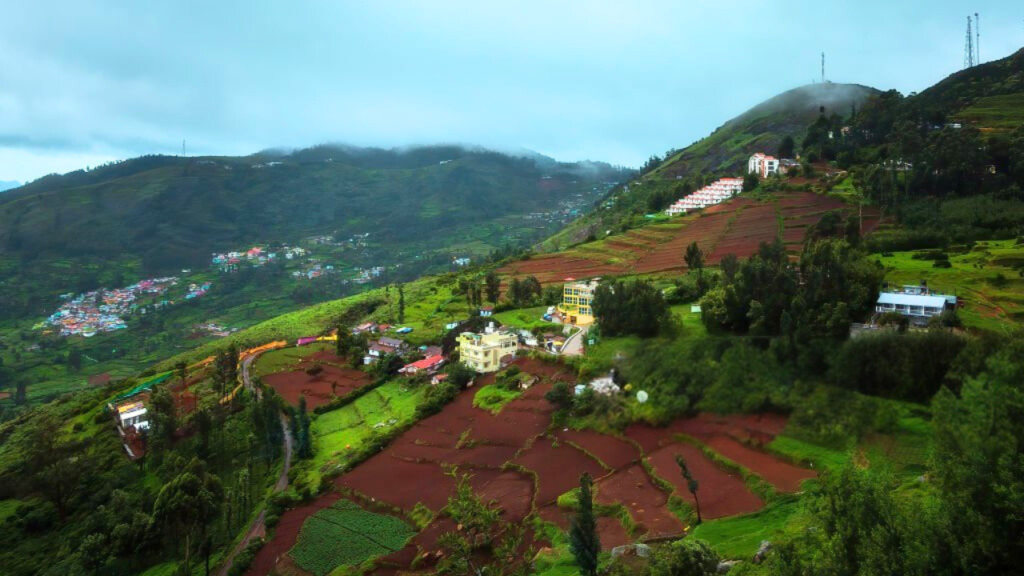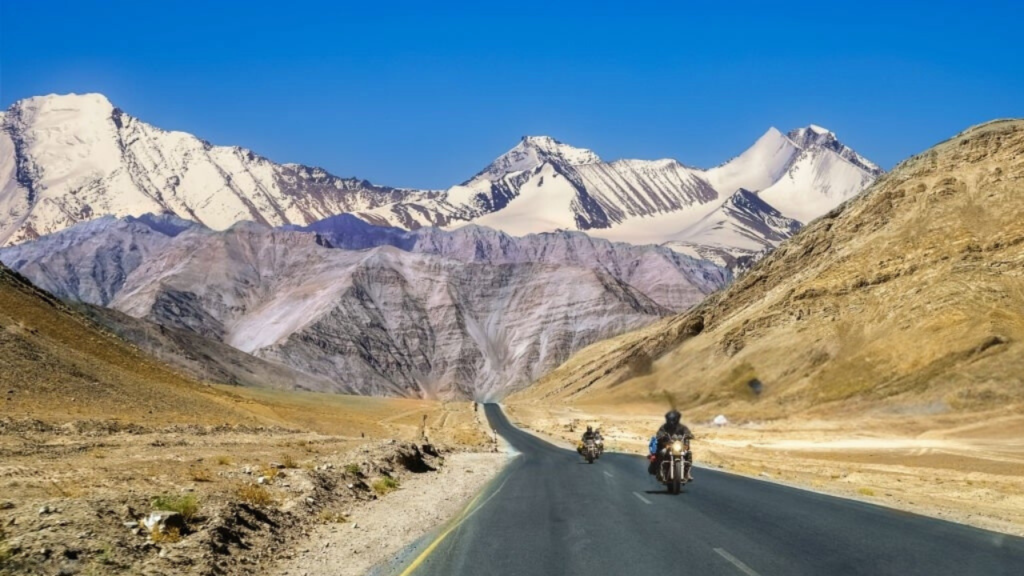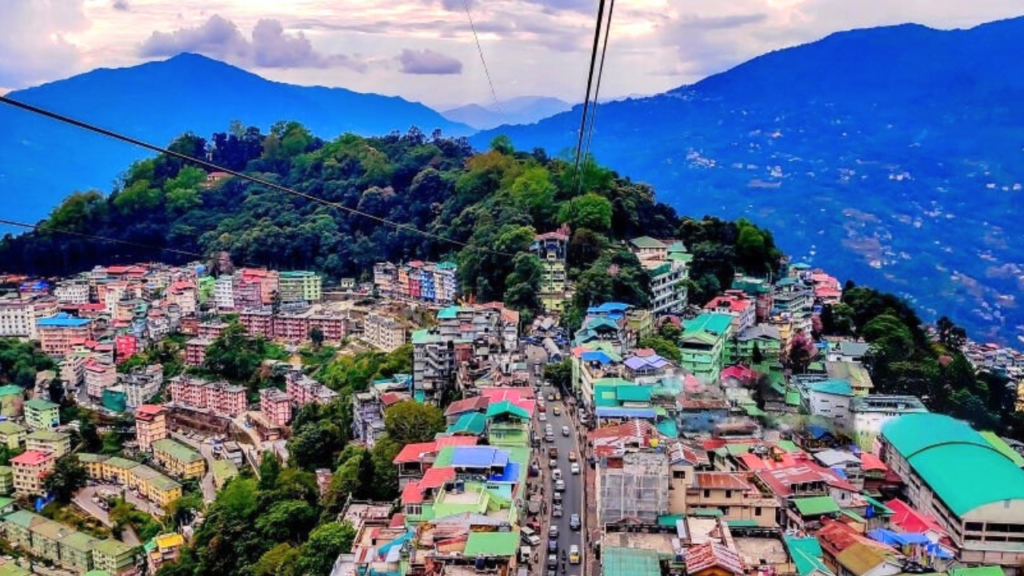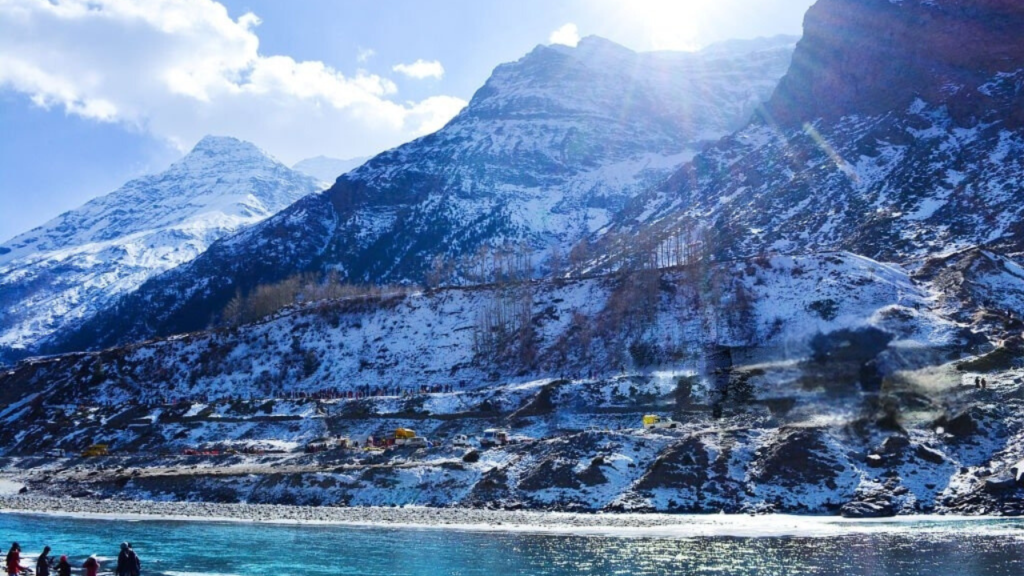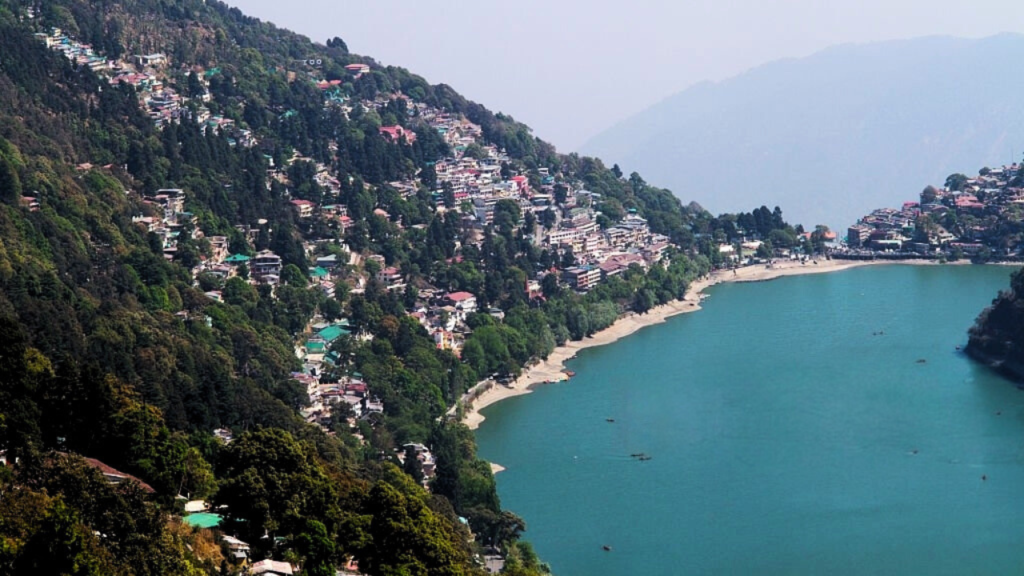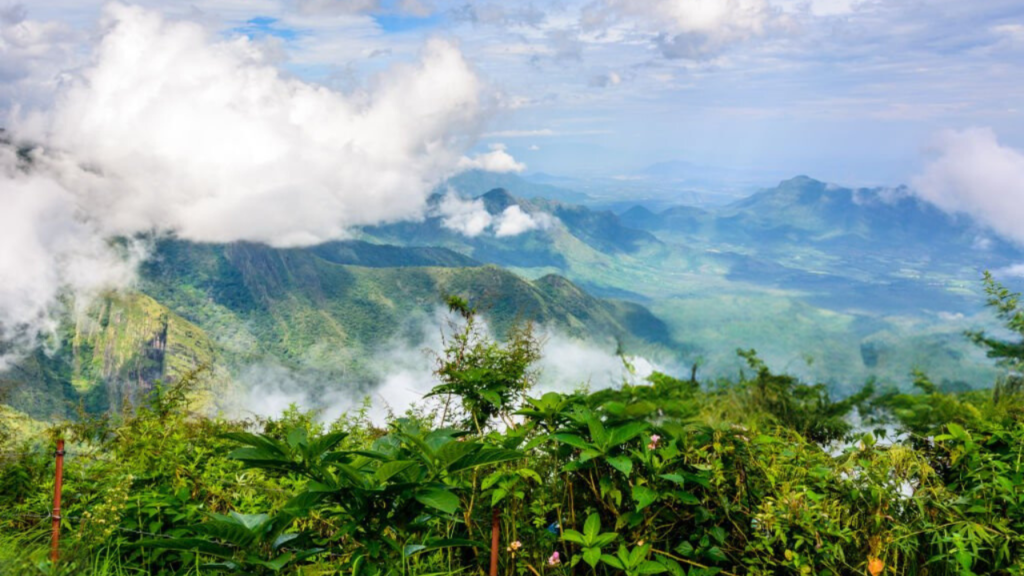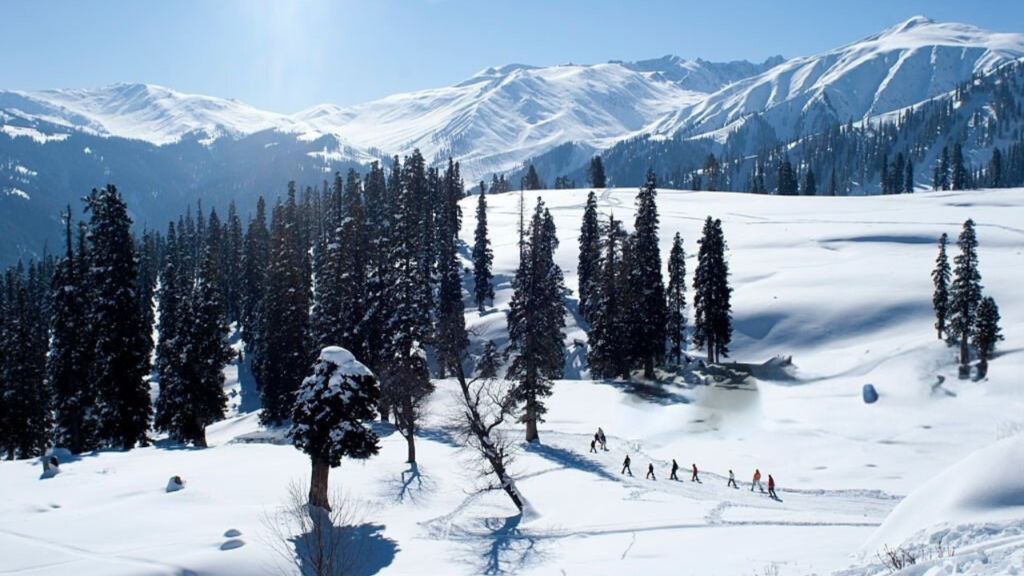1. Ranthambore National Park
Ranthambore National Park beckons adventure seekers and nature enthusiasts. Once a private hunting ground for Mughal emperors, this park has transformed into a premier tiger reserve, renowned for its majestic Bengal tigers. These striped predators, often spotted basking on ancient ruins or silently stalking through the dry deciduous forests, are the stars of the show. But Ranthambore’s magic extends far beyond tigers. Jeep safaris offer thrilling opportunities to encounter a diverse array of wildlife, from elusive leopards and sloth bears to playful hyenas. The skies come alive with a symphony of bird calls, while reptiles slither amidst the undergrowth. History buffs will be captivated by the park’s rich past, with ancient forts perched atop rocky hills whispering tales of bygone eras. Best travel places in rajasthan is Ranthambore National Park caters to a variety of interests, offering heart-pounding wildlife encounters, captivating historical sites, and an unforgettable glimpse into the untamed beauty of Rajasthan.
Location- Sawai Madhopur, Rajasthan
Safari Timing– 6:00 AM to 9:30 AM & 3:00 PM to 6:30 PM in Summer, 7:00 AM to 10:30 AM & 2:30 PM to 6:00 PM in Winter.
Jeep Safari- Rs. 1800 for Indian (Per Person) & 3700 for foreign
Canter Safari- Rs. 1300 for Indian & 2700 for foreign
Best Time to Visit- October to June
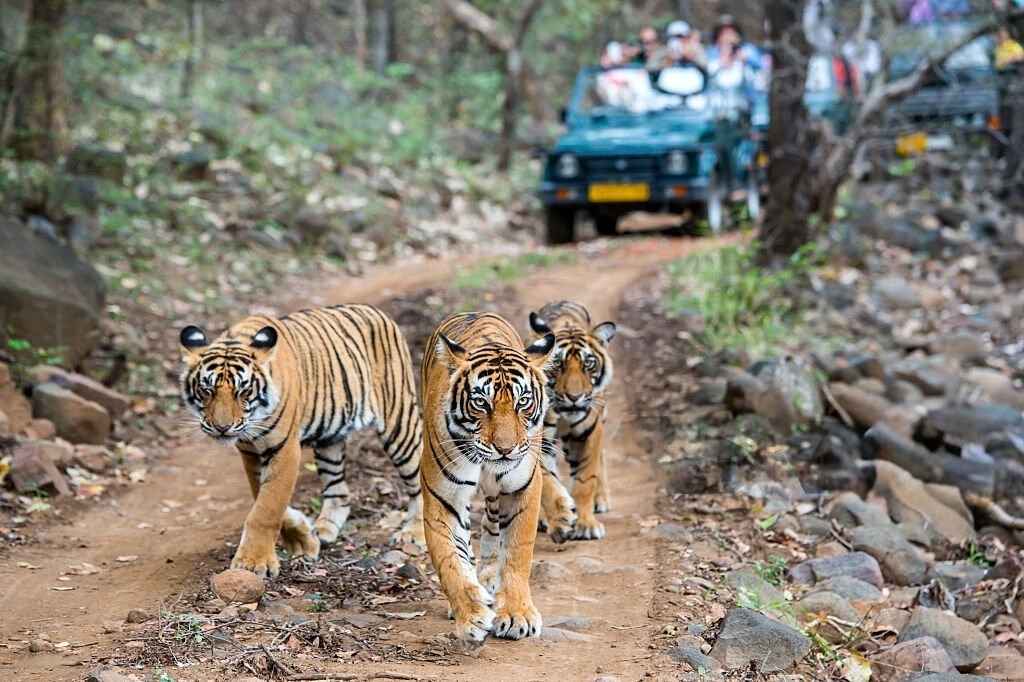
2. Jim Corbett National Park
Nestled in the serene environs of Uttarakhand best travel places in india, Jim Corbett National Park beckons travelers with its captivating blend of untamed wilderness and rich biodiversity. Established in 1936, it proudly stands as India’s oldest national park, spanning across lush forests, grasslands, and meandering rivers over a sprawling 500 square kilometers. Renowned for its thriving population of the majestic Bengal tiger, the park offers a haven for wildlife enthusiasts and nature aficionados. Beyond the elusive big cats, Jim Corbett is home to a myriad of other fascinating creatures, including elephants, leopards, and diverse avian species. Travelers can immerse themselves in the park’s natural splendor through exhilarating jeep safaris, tranquil elephant rides, or leisurely walks along its scenic trails. History buffs will also find intrigue in the park’s cultural significance, with landmarks like the Corbett Museum commemorating the legacy of its namesake, the revered hunter-turned-conservationist Jim Corbett. Whether seeking adventure or solace amidst nature’s embrace, a visit to Jim Corbett National Park promises an enriching and unforgettable travel experience.
Location- Nainital District of Uttarakhand
Safari Timing- 5.30 AM – 8.30 AM & 3 PM – 6 PM
Jeep Safari- Rs. 6500 for Indian (per person) & 11999 for foreign
Best Time to Visit- November to February
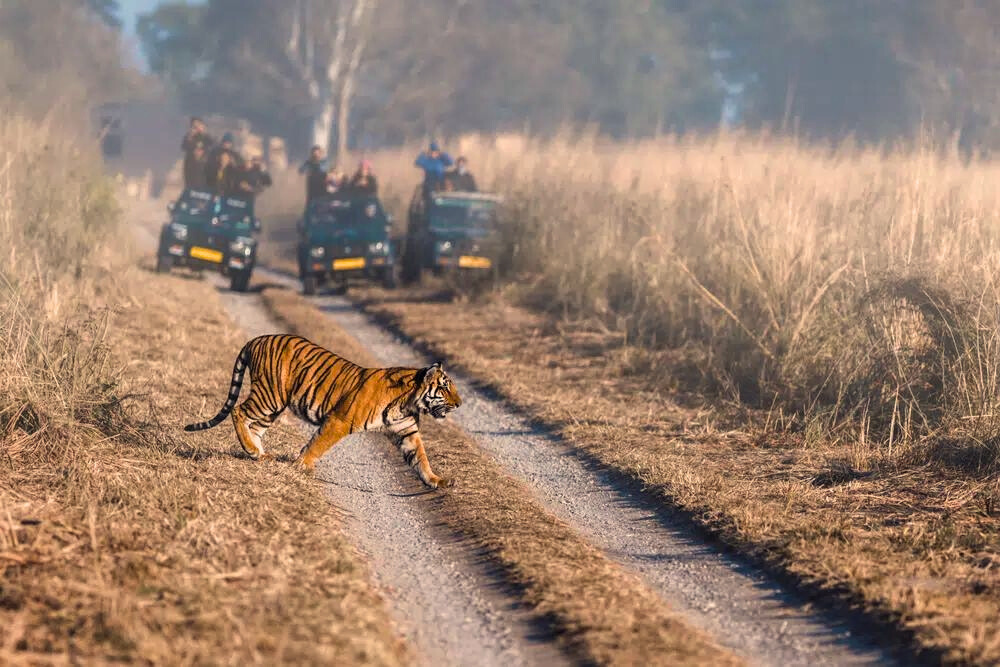
3. Kaziranga National Park
Kaziranga National Park, situated in Assam, India, is a premier destination for travelers seeking a profound connection with nature. Spanning over 430 square kilometers, this UNESCO World Heritage Site is celebrated for its significant population of the endangered Indian one-horned rhinoceros, the largest in the world. The park’s diverse ecosystems, including expansive grasslands, dense forests, and serene wetlands, support an incredible variety of wildlife, such as tigers, elephants, wild buffalo, and numerous bird species. Guided jeep safaris and elephant rides offer visitors close encounters with these magnificent creatures, making for an exhilarating and educational experience. Knowledgeable guides enhance these excursions with insights into the park’s successful conservation efforts and the behaviors of its wildlife. The breathtaking landscapes and abundant photographic opportunities ensure that every moment spent in Kaziranga is memorable. best winter places in india For those seeking an unforgettable adventure, Kaziranga National Park seamlessly combines the thrill of wildlife exploration with the tranquil beauty of one of India’s most cherished natural treasures.
Location- Assam
Safari Timing- 7.00 AM to 4:00 PM
Jeep Safari- Rs. 3800 for Indian (per person) & Rs. 7100 for Foreign
Best Time to Visit- November to April
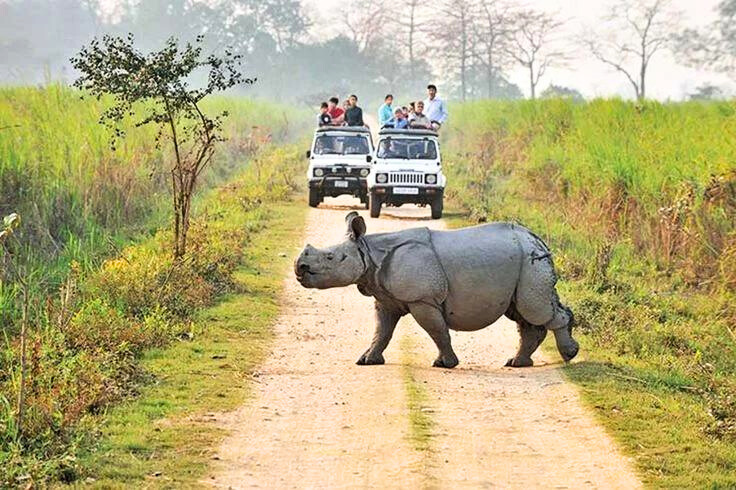
4. Tadoba National Park
Nestled in the heart of Maharashtra, India, Tadoba National Park beckons travelers with its captivating blend of untamed wilderness and diverse wildlife. Spanning over 1,700 square kilometers of pristine landscapes, this sanctuary is renowned for its flourishing population of Bengal tigers, offering visitors an extraordinary opportunity to observe these magnificent creatures in their natural habitat. Beyond its iconic inhabitants, Tadoba boasts a rich tapestry of biodiversity, with sightings of leopards, sloth bears, wild dogs, and over 280 avian species delighting nature enthusiasts and photographers alike. Guided safaris through its verdant forests and meandering trails promise immersive experiences, while expert naturalists share insights into the park’s ecological significance and conservation efforts. With its tranquil ambiance and breathtaking vistas, Best travel places in maharashtra is Tadoba National Park invites travelers to embark on a journey of discovery, where every encounter with the wild is a testament to the enduring beauty of nature.
Location- Chandrapur district of Maharashtra
Safari Timing- 7:00 AM – 6:00 PM on all days and closed on every Tuesdays
Jeep Safari- Rs. 6100 weekdays & 7100 Weekends
Best Time to Visit- October to June
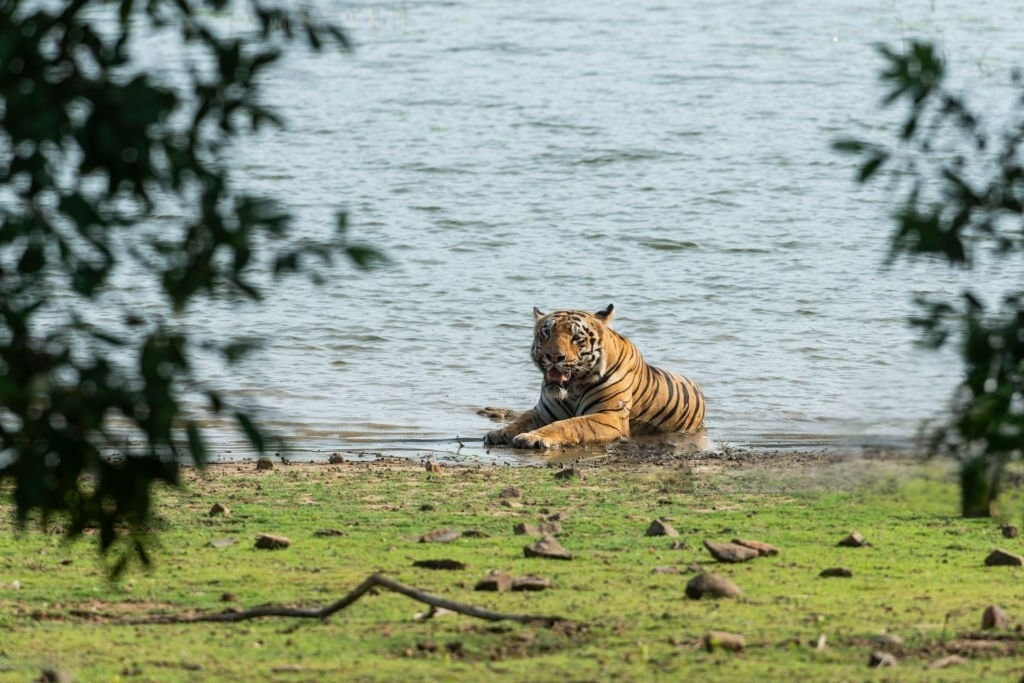
5. Bandhavgarh National Park
Shrouded in the verdant embrace of Madhya Pradesh’s Vindhya Hills, Bandhavgarh National Park beckons wildlife enthusiasts and nature lovers. Renowned for harboring the highest density of tigers in India, Bandhavgarh offers a thrilling opportunity to spot these majestic striped cats roaming amidst the lush Sal forests and grasslands. Beyond the allure of the tiger, jeep safaris unveil a captivating tapestry of wildlife. Elusive leopards stalk the undergrowth, playful sloth bears lumber through the foliage, and cheetahs, recently reintroduced to the park, add another layer of excitement. The symphony of bird calls adds to the immersive experience, with vibrant species like the crested serpent eagle and the Indian pitta captivating birdwatchers. Bandhavgarh’s allure extends beyond its fauna. Towering atop a hill, the ancient Bandhavgarh Fort whispers tales of bygone eras, offering a glimpse into the region’s rich history. Catering to a variety of interests, Bandhavgarh National Park promises an unforgettable experience – a thrilling wildlife adventure, captivating encounters with diverse species, and a touch of historical intrigue, all nestled within the heart of India.
Location- Madhya Pradesh, India
Safari Timing- 6:30 AM – 11:00 AM & 2:30 PM – 5:30 PM from Oct – Feb and 6:00 AM – 10:00 AM & 3:00 PM – 6:00 PM from Mar – June, Closed on every Wednesday evening
Safari Charges- Rs. 3500 to 4500 (per person) & Rs. 1500 for person for Elephant safari
Best Time to Visit- October to June
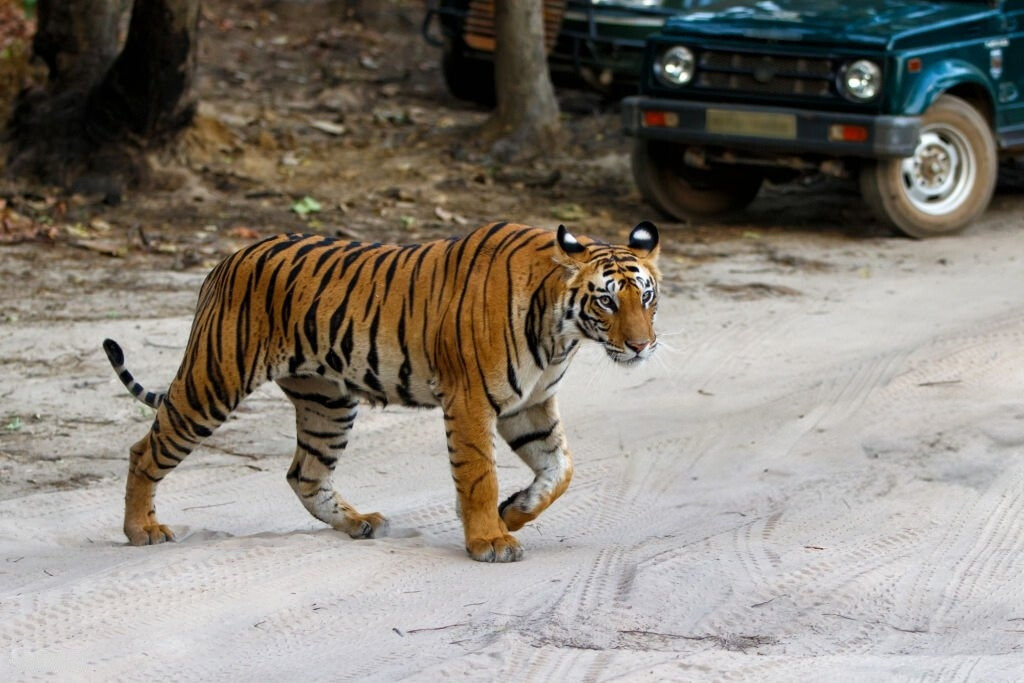
6. Gir National Park
Nestled in the vibrant tapestry of Gujarat, India, Gir National Park stands as a sanctuary of both biodiversity and cultural heritage. Spanning over 1,412 square kilometers, it serves as a vital refuge for the endangered Asiatic lion, symbolizing resilience and hope in the face of conservation challenges. Beyond its role as a habitat for iconic species, Gir fosters a profound connection between people and nature, inviting visitors to immerse themselves in its timeless wonders. As travelers traverse its winding trails and lush forests, they become part of a larger narrative of conservation and stewardship, where every sighting ignites a sense of wonder and responsibility. Through community engagement initiatives and sustainable tourism practices, Gir not only protects wildlife but also empowers local communities, weaving a tapestry of coexistence and harmony. Amidst the rustling leaves and echoing roars, Gir whispers tales of resilience and renewal, reminding us of our shared duty to safeguard the natural world for generations to come. In the embrace of Gir’s wilderness, visitors find not only solace but inspiration, as each encounter leaves an indelible mark on the heart and soul.
Location- Chitrod, Gujarat, India
Safari Timing- Timings (Oct to Feb) is 6:30 AM to 9:30 AM | 9:30 AM to 12:30 PM | 3:00 PM to 6:00 PM & Timings (March to June) is 6:00 AM to 9:00 AM | 9:00 AM to 12:00 PM | 4:00 PM to 7:00 PM
Jeep Safari- Rs. 4700 (per person) for Indian & Rs. 16800 (per person) for Foreigner
Best Time to Visit- December to March
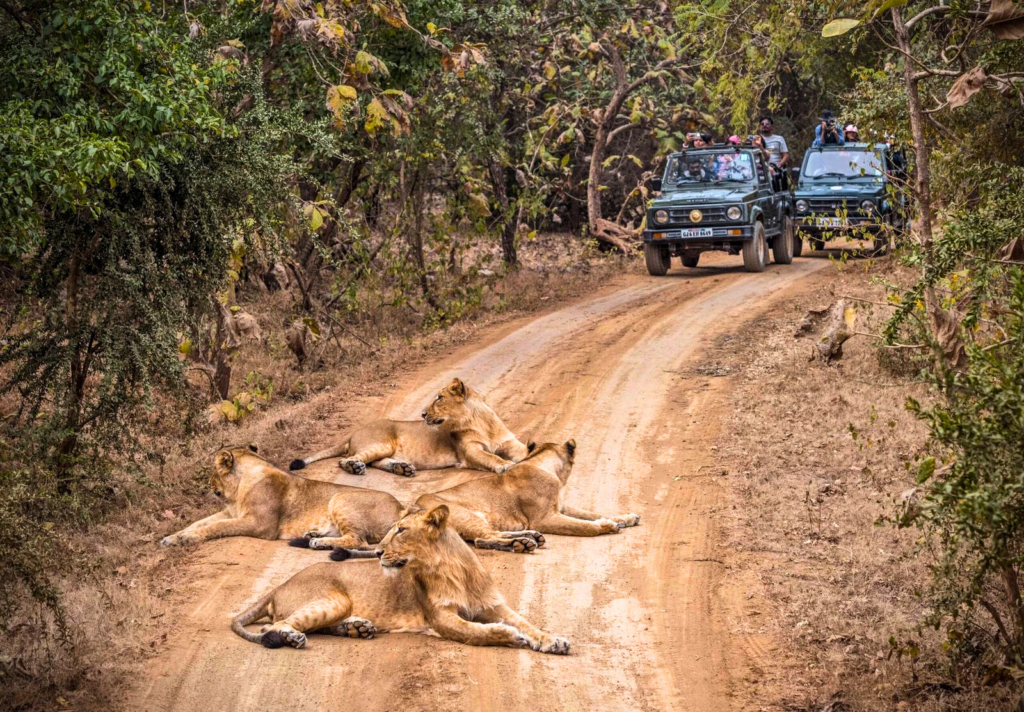
7. Bandipur national park
Bandipur National Park, nestled in the picturesque landscapes of Karnataka, India, stands as a testament to the harmonious coexistence between mankind and wildlife. Spanning over 874 square kilometers, this sanctuary serves as a refuge for a plethora of endangered species, including the majestic Bengal tiger and the elusive Indian leopard. Its lush forests, rolling hills, and meandering rivers not only captivate the eye but also nurture a delicate ecosystem, teeming with life. Beyond its ecological significance, Bandipur is a symbol of conservation efforts and community engagement. Local communities, with their intimate knowledge of the land, actively participate in safeguarding its treasures, ensuring a sustainable future for generations to come. Visitors are not merely spectators here but partners in the preservation journey, invited to immerse themselves in the park’s beauty while respecting its inhabitants. Bandipur thus transcends its role as a mere wildlife sanctuary; it embodies the collective responsibility to cherish and protect our natural heritage, serving as a beacon of hope for biodiversity conservation worldwide.
Location- Chamarajnagar district in the Indian state of Karnataka
Safari Timing- Bus Safari Timing is 6:15 AM to 7:45 AM | 7:45 AM to 9:30 AM | 2:30 PM to 4:00 PM | 4:00 PM to 5:30 PM | 5:00 PM to 6:30 PM & Canter Safari Timing is 6:00 AM to 9:00 AM | 3:00 PM to 6:00 PM
Bus Safari- Rs. 850 (per person) for Indian & Rs. 2500 (per person) for Foreigner
Canter Safari- Rs. 3750 (per person) for Indian & Rs. 4700 (per person) for Foreigner
Best Time to Visit- October to February

8. Sariska National Park
Sariska National Park, nestled in the picturesque Aravalli Hills of Rajasthan, India, stands as a testament to the country’s rich biodiversity and conservation efforts. Spread across an area of 866 square kilometers, this pristine sanctuary offers a captivating blend of dense forests, rocky landscapes, and lush grasslands, making it a haven for wildlife enthusiasts and nature lovers alike. Renowned for its population of Bengal tigers, Sariska presents a rare opportunity to catch a glimpse of these majestic creatures roaming freely in their natural habitat. However, the park’s allure extends beyond its iconic feline residents, boasting a diverse array of wildlife including leopards, jungle cats, sambar deer, and myriad bird species. Visitors can embark on thrilling safaris, both by jeep and on the back of an elephant, to explore the park’s hidden treasures and witness its vibrant ecosystem up close. Moreover, Sariska’s rich historical heritage adds an extra layer of intrigue, with ancient ruins scattered throughout the park, including the imposing Kankwari Fort and the mystical Pandupol Hanuman Temple. Whether seeking adventure, tranquility, or a deeper connection with nature, Sariska National Park promises an unforgettable experience that celebrates the splendor of the natural world.
Location- Alwar District, Rajasthan, India
Safari Timing- 6:30 AM to 10:00 AM & 2:30 PM to 6:00 PM
Jeep Safari- Rs. 1400 (per person) for Indian & Rs. 14000 (Ful Gypsy) for Foreigner
Canter Safari- Rs. 1150 (per person) for Indian & Rs. 2000 (per person) for Foreigner
Best Time to Visit- October to March
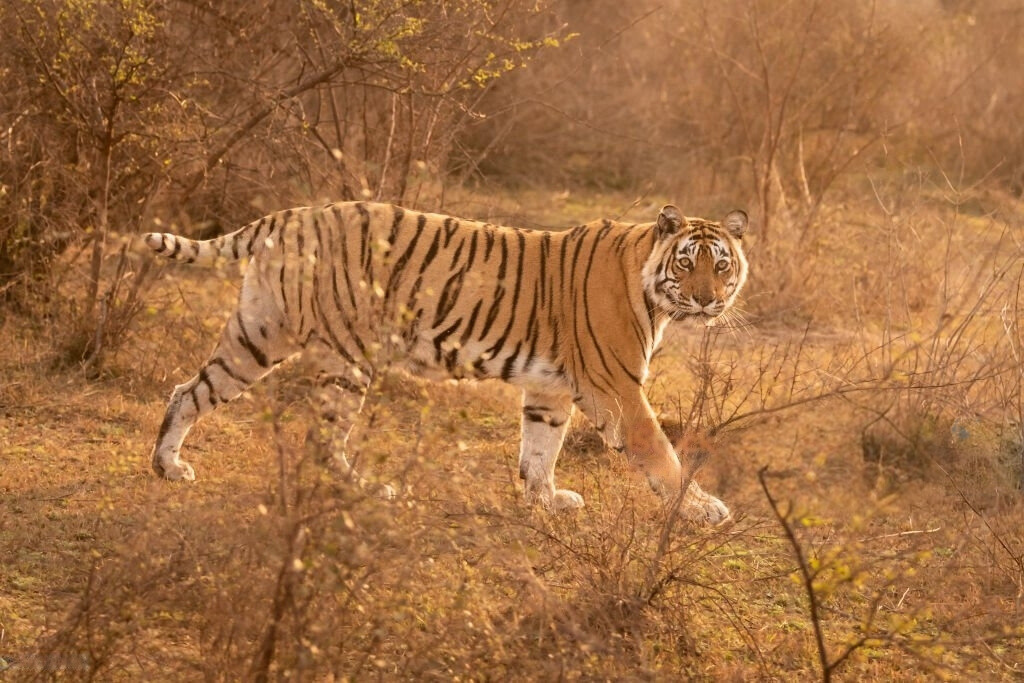
9. Kanha National Park
Kanha National Park, a jewel of Madhya Pradesh in central India, offers an enchanting escape into the heart of nature. Spanning over 940 square kilometers, this pristine wilderness is renowned for its lush sal forests, meandering streams, and verdant meadows, creating a picturesque haven for wildlife enthusiasts and nature lovers alike. Kanha is famed for its thriving population of majestic Bengal tigers, leopards, and the rare barasingha, or swamp deer, which was brought back from the brink of extinction within this sanctuary. Visitors are often spellbound by the park’s biodiversity, where each safari ride becomes a thrilling journey through habitats teeming with chital, wild boar, and a myriad of bird species. Beyond its wildlife, Kanha’s appeal lies in its serene landscapes and the timeless aura of its untouched forests. Engaging local guides enrich the experience with their deep knowledge and captivating stories, providing insights into the park’s ecology and conservation efforts. As dawn breaks, the forest comes alive with a symphony of bird calls, promising unforgettable moments of tranquility and awe. Whether you are a seasoned wildlife photographer or simply seeking a retreat from urban life, Kanha National Park offers an immersive adventure into the wild, leaving you rejuvenated and inspired.
Location- Satpura Range, Madhya Pradesh, India
Safari Timing- 6:00 Am to 11:30 AM & 3:00 PM to 6:00 PM
Safari Charges- Rs. 6500 (per person) for Indian & Rs. 9500 (per person) for Foreigner
Best Time to Visit- November to February
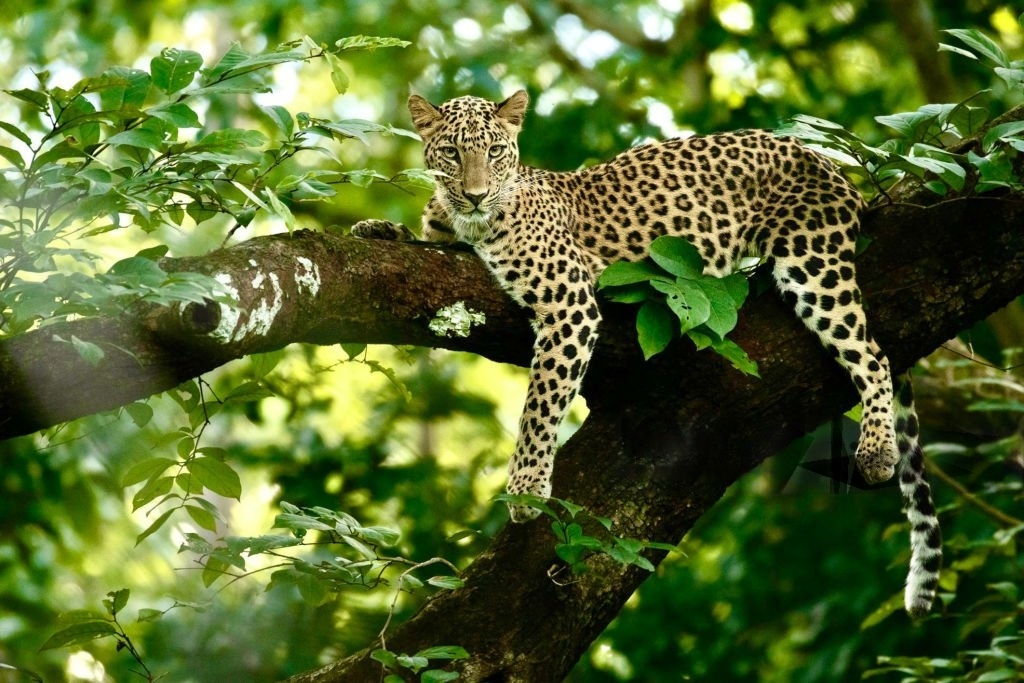
10. Periyar National Park
Nestled in the picturesque landscapes of Kerala, India, Periyar National Park stands as a beacon of biodiversity and natural conservation. Covering an expanse of 925 square kilometers in the Western Ghats, this sanctuary is a haven for wildlife enthusiasts and nature lovers alike. At its heart lies the tranquil Periyar Lake, offering visitors the opportunity to embark on serene boat safaris, where sightings of majestic elephants, elusive tigers, and a plethora of bird species await. Beyond its rich fauna, Periyar National Park invites exploration through its lush forests, offering trekking trails and guided nature walks that reveal the intricate ecosystems thriving within. Kerala is best hill stations in india for Adventurous souls can partake in bamboo rafting expeditions, navigating the pristine waters surrounded by verdant foliage. Moreover, the park serves as a gateway to the cultural heritage of Kerala, with nearby spice plantations and vibrant local communities offering immersive experiences. Whether seeking solace in nature’s embrace or embarking on thrilling wildlife encounters, Periyar National Park promises an enriching journey through the untouched wilderness of southern India, leaving visitors captivated by its beauty and diversity.
Location- Thekkady, Idukki District, Kerala, India
Safari Timing- 6:00 Am to 7:00 PM
Safari Charges- Rs. 5500 for Periyar Tiger Trail Treks (One night) &Rs. 7500 for Periyar Tiger Trail Treks (2 nights)
Best time to Visit- October to June
